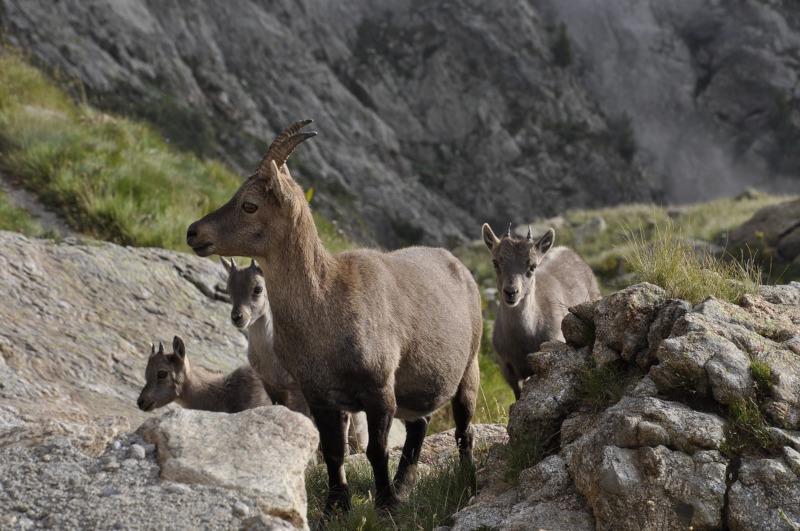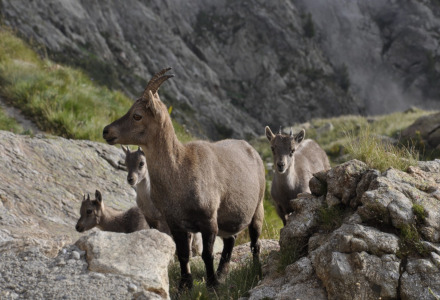
Chamois Facts
- First of all, the relatively simple term of Chamois serves as the common name for a truly remarkable variety of mammal. That’s fortunate, because the fascinating animal has a small burden to bear.
- Quite regrettably, the animal sadly has a somewhat confusing scientific name. In point of fact, this consists of Rupicapra rupicapra. But, by either name one uses, it represents a highly interesting species.
- Furthermore, several subspecies of the Chamois also exist, and are themselves quite interesting creatures. Fortunately, at least some of these subspecies currently enjoy legal protection in the areas in which they appear.
- This animal does have other names in other languages. But the term most often used for it by scientists comes from the French, chamois. Its population numbers do appear to be beginning to diminish. Yet, for the moment, these appear to be sufficient.
- Therefore, the IUCN lists the Chamois as Least Concern. Nonetheless, it must be considered to be facing several threats to its existence. The greatest of these, much like other species around the world, include habitat loss and climate change.
Related Articles
Chamois Physical Description
Perhaps most notably, the remarkable Chamois impresses with many qualities. Size, however, does not rank as one of them. To the great surprise of many people, the remarkable animal actually ranks as a very small variety of bovid.
But, though it’s not as large as most related species, it does share another trait. That’s because of the fact that, like the great majority of bovids, this fascinating animal displays a moderate degree of the physiological trait of sexual dimorphism.
Mature adults of both genders attain an average height at the shoulder of roughly 28 – 31 in (70 – 80 cm). In addition, an average body length for both equals about 42 – 54 in (107-137 cm). The tail remains unseen except during mating.
However, the first of two slight differences appear in terms of weight. That’s because males typically grow slightly heavier. Firstly, mature males can reach 132 lb (60 kg) in weight. Meanwhile, the smaller females of the Chamois rarely exceed 99 lb (45 kg).
The second manner in which the Chamois distinguishes the sexes appears with the horns. In the case of this species, both genders develop these. Further, they grow short but straight. But those of the male usually have a thicker form.
In addition, the fur of both sexes shows a deep brown in the summer. However, this turns to a pale gray color in the winter. White marks on the side of the head and black stripes under the eyes complete the remarkable markings.
- Kingdom: Animalia
- Phylum: Chordata
- Class: Mammalia
- Order: Artiodactyla
- Family: Bovidae
- Genus: Rupicapra
- Species: R. rupicapra
Chamois Distribution, Habitat, and Ecology
The magnificent Chamois boasts another impressive statistic. The animal actually inhabits a comparatively broad section of the world. In fact, this zone of habitation spreads across two separate continents. That’s because of the fact that it lives in both Europe and Asia.
More precisely, this supremely gorgeous mammal lives in the countries of Turkey and the Caucasus in Asia. It also lives in the Pyrenees, in portions of Europe. Given this natural range, the type of habitat it inhabits seems predetermined.
That’s due to the fact that the incredible mammal evolved as endemic to moderately high altitudes. Furthermore, it thrives in highly rocky and rugged terrain. Individuals appear at heights between 11,800 ft (3,600 m) in summer, and 2,600 ft (800 m) in the winter.
Much like its many related species, the marvelous Chamois evolved as what one might expect. This holds true since it lives as an entirely herbivorous creature. In its case, it primarily consumes a variety of locally varying vegetation.
However, its diet remains quite seasonal. The great majority of this includes herbs and grasses during summer. But, then it feeds on various tree needles and bark in the winter. It also evolved has a mainly diurnal behavioral pattern.
Mature males most commonly live a solitary life. The lone exception to this appears to be during mating season. Meanwhile, females and the young live almost exclusively in herds. Further, these generally number between 15 – 30 individuals.
Currently, human hunters continue to form its main predator, even today. Its leading natural predators, though, include several powerful creatures. These consist of such species as Persian leopards, gray wolves, and Eurasian Lynxes.
Species Sharing Its Range
Check out our other articles on Astounding Lizards of the World, Victoria Crowned Pigeon, Havasu Falls, Regal Birdflower, Great Hammerhead Shark, Lange’s Metalmark Butterfly

